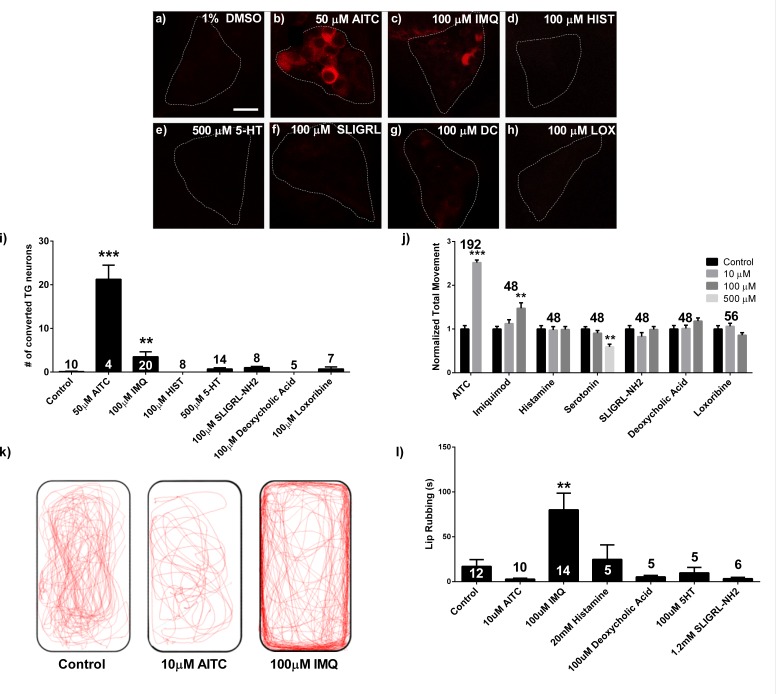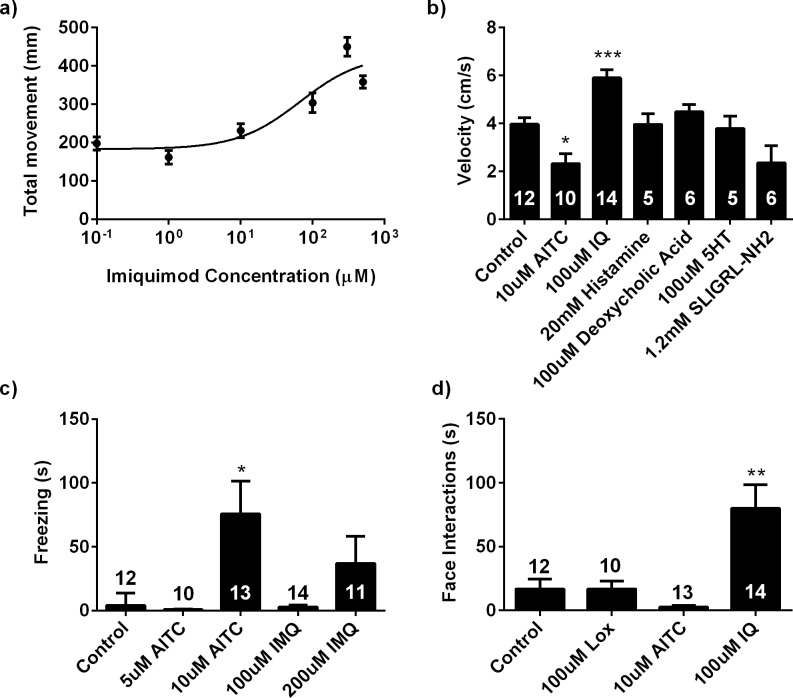Figure 1. Imiquimod produces behavioral and neuronal responses in the zebrafish.
(A–H) 3dpf live elavl3:CaMPARI TG imaging of larvae exposed to 405 nm light and control (A), 50 μM allyl isothiocyanate (AITC) (B), 100 μM imiquimod (IMQ) (C), 100 μM histamine (HIST) (D), 500 μM serotonin (5-HT) (E), 100 μM SLIGRL-NH2 (F), 100 μM deoxycholic acid (DCA) (G), and 100 μM loxoribine (LOX) solutions (H). (I), Counts of photoconverted cells from experiments (A-H). (J), 5dpf WT larval locomotor behavior screen. (K) Representative traces of adult behavior. (L) Adult lip-rubbing behavioral assay. (I, J, L) ***p<0.001, **p<0.01, one-way ANOVA. Bars represent mean ± s.e.m.


